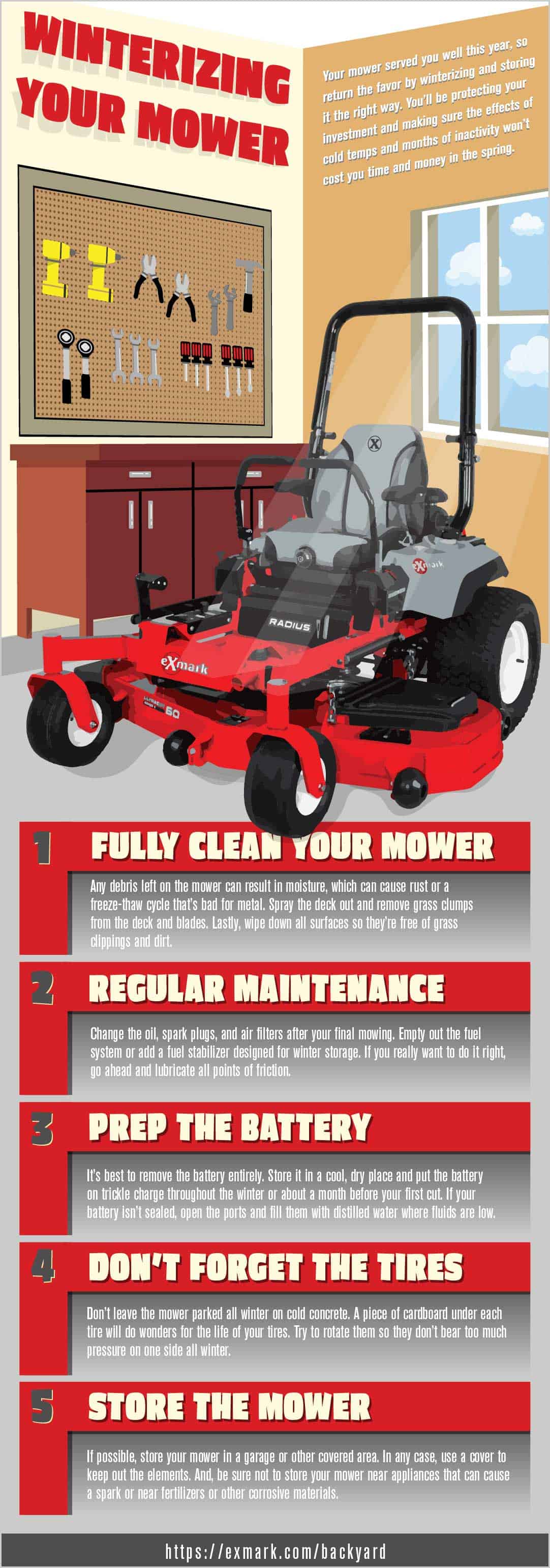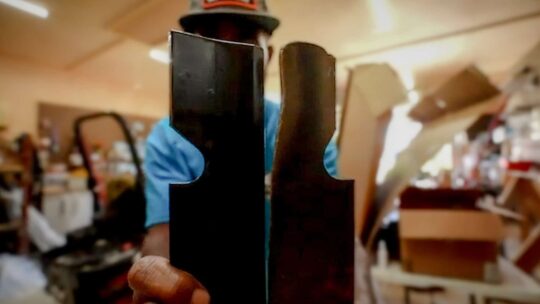Crisp air and falling leaves are tell-tale signs that mowing season is coming to a close. While your first instinct might be to just park your mower and hunker down for winter, you’ll want to first ensure it’ll be ready come springtime. In other words—you’ll need to know how to winterize a lawn mower.
Proper mower winterization is a critical step in protecting your investment over the long haul. Extended periods of inactivity can wreak havoc on mowers, and the added effects of cold weather makes properly winterizing them even more important.
Whether you’re operating a riding mower, a push mower, or an entire fleet of zero-turns, you’d be wise to follow these 5 steps for how to winterize your lawn mower.

Full Cleaning
If you perform only one lawn mower winterization task this fall—make sure that you give it a full cleaning. Any debris left on a mower’s exterior or interior can result in moisture, which can cause rust or a freezing/thawing cycle that’s sure to harm your mower’s metal. Perform any steps you normally would to clean other power equipment, including spraying the deck out, removing the blades, and clearing out clumps of grass. When done correctly, your machine should be free of any grass, dirt, or debris.
Perform Mower Maintenance
Once clean, the next step in mower winterization is to change out the oil, spark plugs, and air filters. Also, be sure to empty the gas tank to prevent the fuel from getting gummy or eroding the internal components of the engine. There are a couple of choices here—you can either drain the fuel completely or fill the tank with fuel combined with a fuel stabilizer designed for winter storage. For a more comprehensive maintenance, lubricate all friction points.
After these steps have been completed, simply run the engine for a few minutes. This will confirm that everything has been changed properly and ensure that new fuel has been injected into the engine.
Remove or Disconnect the Battery
You can properly care for your battery throughout the winter by either charging it up periodically or removing it altogether. If kept connected, make sure your battery doesn’t sit too long between cranks.
Tire Care
If your mower has pneumatic tires, park it on a non-concrete surface. If this isn’t an option, place a piece of cardboard on top of cold concrete to serve as insulation. Finally, rotate the tires so they don’t bear too much pressure on any one side.
Cover the Mower with a Tarp
The last step in winterizing your lawn mower is to properly store it. A garage—or other covered structure—is an ideal place to protect mowers from cold and moisture. For an added layer of defense against the elements, use a tarp or blanket to cover your mower. Finally, make sure to store it away from appliances, fertilizers, or any other corrosive materials known to compromise metal.
Now that you have all you need to know about mower winterization, it’s time to properly put your mower to bed for the season so it’ll be as ready to mow as you are come spring!



